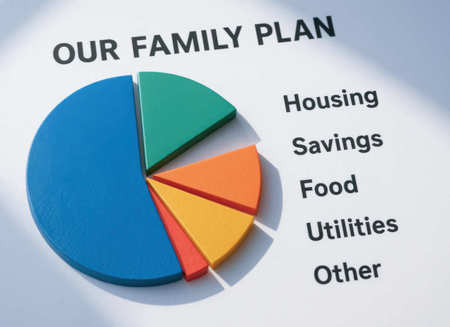
Every household has bills to pay, but not every household has a budget that works. For many families, it’s not that they haven’t tried—it’s that the system they’re using doesn’t stick. Too complex, too time-consuming, or just not practical for their everyday lives.
A good budget doesn’t need to track every penny or rely on fancy tools. It needs to make sense to the people using it. That means choosing a method that fits your style, your income, and the way your household spends money. Below are three straightforward ways to build a budget—no software, no fluff—just simple systems that work.
1. The Bucket Approach: Grouping Money Into Broad Categories
Think of this one like sorting cash into a few labeled jars. Each “bucket” holds money for a specific type of expense. Instead of trying to manage twenty budget categories, you manage just a few.
Let’s say you’ve got three main buckets: one for essentials like rent, food, and utilities; another for extras like eating out or buying gifts; and a third for savings. Some people add a “miscellaneous” bucket to catch the random stuff that doesn’t fit elsewhere.
Once you set the amount for each bucket, that’s your limit. If you spend the full amount on dining out by the 15th, the extras bucket is done for the month. Simple as that.
This method works well for households where more than one person is spending money. Fewer categories mean fewer chances for confusion. Still, you’ll need to agree in advance on what belongs in each bucket—what one person calls “essential” might look like “extra” to someone else.
The bucket method doesn’t require tracking every transaction. You just monitor the totals. And once a month wraps up, you review and adjust if something felt too tight or too loose.
2. Pay-Yourself-First: Saving Before Spending
This method flips the usual budgeting routine. Instead of paying your bills first and saving whatever’s left, you do the opposite. You decide how much to save and move it right away—then live on the rest.
Let’s say your monthly take-home pay is $4,500. You decide to save $600. That gets moved to savings the day your paycheck hits. You now have $3,900 left to handle your monthly expenses. That becomes your working budget.
The big benefit here? You’re making savings a priority, not an afterthought. And over time, those savings build up, even if the rest of your budget fluctuates a little month to month.
For families, this approach helps avoid the trap of “we’ll save if there’s anything left”—because let’s be honest, there usually isn’t. If the money sits in your account, it’s going to get used. Saving first makes sure it doesn’t get swallowed up by impulse buys or unexpected costs.
This method doesn’t mean you ignore your bills. You still need a rough budget for housing, groceries, and so on. But it makes savings a line item, just like rent or insurance.
3. Zero-Based Budgeting: Give Every Dollar A Job
Zero-based budgeting is for people who want to see exactly where every dollar goes. It’s more hands-on than the other two methods, but it gives you the clearest picture.
Here’s how it works: You take your total income for the month and assign every bit of it to a specific purpose—spending, saving, or paying down debt. At the end, your income minus expenses equals zero. That doesn’t mean you’ve spent everything. It just means everything’s been planned for.
You might assign $1,200 to rent, $500 to groceries, $300 to savings, $200 to a car payment, $100 for kids’ activities, and so on, until you’ve accounted for the whole amount.
This method forces you to think ahead. If you know your car registration is due next month, you set aside money for it now. That way, it doesn’t knock your budget off course when it arrives.
It’s a good fit for couples who want full visibility into spending. If one partner handles most of the bills, zero-based budgeting helps the other person stay informed. Everyone knows what’s coming in, what’s going out, and what’s set aside.
Managing A Household Budget With More Than One Spender
Even the best budget can fall apart if only one person sticks to it. In most households, more than one person makes spending decisions. That’s where communication becomes just as important as the budget itself.
Here are a few tips that can help:
-
Set spending thresholds. Maybe anything over $50 needs a quick check-in. Below that, no need to ask.
-
Pick a time each month for a quick review. Nothing formal. Just a short conversation to see what worked, what didn’t, and whether any big expenses are coming up.
-
Decide who tracks what. One person might do the math, but everyone needs to know the plan.
Budgeting Isn’t Just About Spending—Savings Matter Too
A lot of people build a budget and forget to include savings. That’s a mistake. Budgeting for only what you spend leaves you vulnerable to surprises, and it keeps you from making progress toward goals.
Whether you’re saving for an emergency fund, a vacation, or something big like a home remodel, it needs a place in the budget. Even $50 a month set aside consistently can make a difference. And once saving becomes automatic, it stops feeling like a sacrifice and starts feeling like progress.
Don’t wait to save until there’s “extra.” Build it in from the beginning, even if it’s a small amount. Choose What Works For You—Then Stick With It
Not sure where to begin, or need help customizing a budget that fits your income and financial goals? Your CPA can help you build a strategy that works and keeps everyone in the household on track. Reach out today and get started on a budget that makes sense for your life.
by Kate Supino
